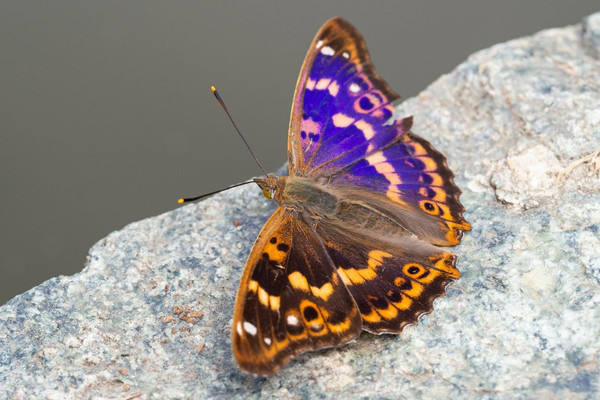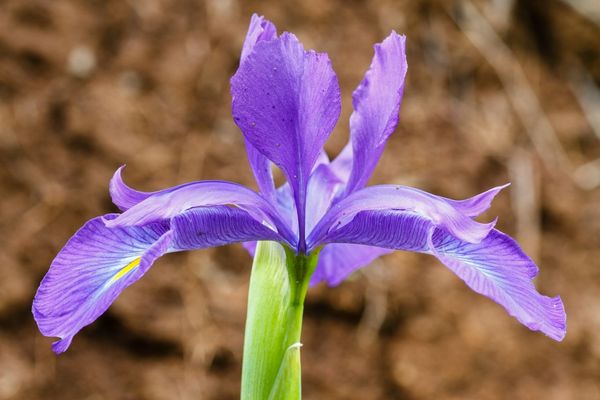Greater Flamingoes
The Best of France’s Wildlife
 By Dominic Couzens
By Dominic Couzens11th December 2020
Dominic is a Naturetrek tour leader and one of Britain's
best known and most prolific natural history writers.
Slightly to the south, in Brittany, a woodland glade in late spring can be eye-opening experience for a UK traveller. For example, in the Forest of Rennes it is possible to hear and see both Black and Middle Spotted Woodpeckers, while admiring Knapweed Fritillaries and Map Butterflies dancing in the clearings. Not far away Western Bonelli’s Warblers will sing their buzzing songs and the ringing of Wrynecks will give a glimpse into Britain’s lost past. On the nearby coast will be Kentish Plovers (another former British breeding bird), Caspian Terns, Bluethroats and Black-winged Stilts – the latter a potential glimpse into Britain’s future.

Travel east from Brittany and you plunge into the plush centre of France, where the continental flavour is stronger still and the variety turns up the heat. The wonderful region of La Brenne throws off any pretensions of being UK-plus. Here, there are 16 species of breeding warblers, including Melodious, Savi’s and Great Reed. Meanwhile, the heronries are full of Night Herons, and Purple Herons and Little Bitterns lurk in the reedbeds and both Black and Whiskered Terns dance over the wetlands. However, perhaps it is the dragonflies and damselflies that prove most effectively the major leap from home. Not only can you find 20 species at the same time (on the same lake!), but most of the species will be entirely “foreign” – Orange Featherleg, Dainty Bluet, Western Willow Spreadwing, White-tailed Skimmer and Lilypad Whiteface, to name a few. Yet this remarkable region is still only a day or so away by train from the UK.
One of these features lies to the north-east of La Brenne, not far from Paris and is, by contrast to the places mentioned above, at its best in the autumn and early spring. This is when large numbers of Common Cranes descend on three huge man-made lakes in the Champagne region, the largest of which is the 48 square kilometre lac du Der-Chantecoq, which is fed by the River Marne. In October, November and March, up to 25,000 of these long-legged birds roost at the lake, and their bugling calls resound around the surrounding countryside. The excellent supporting cast includes White-tailed Eagles and several species of woodpecker.

Returning south, France has room to encompass more delightful and individual regions. The Dordogne is named after the river that runs through it and is a gorgeous pastoral landscape of smallholdings, hedgerows, meadows and woodland glades, a throwback to the time when Britain was not intensively farmed. It is one of those regions where the wildlife seems to explode from everywhere, particularly the wildflowers, but it is also rich in butterflies and birds. Hoopoes and Golden Orioles provide a gentle soundtrack to a spring visit. It is a place to rest and revel, and to sample the quiet life (not forgetting to indulge yourself in some of the world’s most celebrated cuisine!)

Further to the east is another intriguing mountain range. Looming up from Grenoble is the Vercors Massif, a western rump of the Alps made up from jagged limestone peaks. Cut off from the main mountain range, it is much quieter and less visited than the Alps and has some genuine wilderness within its tapestry of mountain pine woods, meadows and cliffs. It is one of very few places in Western Europe with six species of wild ungulates (hoofed grazers) – Red and Roe Deer, Chamois, Wild Boar, Mouflon and Ibex. In addition, a small population of Wolves has recently recolonised, although they are seldom encountered.
Chasing ghosts is possible in the Vercors, however. The mix of habitats, plus the dominant limestone bedrock, ensures that the flora is luxuriant and if you go in the summer, in July, you have an excellent chance of seeing that most weird and charismatic of orchids, the Ghost Orchid, deep in the Bois des Mures, alongside such delights as Dark Red Helleborine and Small Yellow Foxglove.

The Vercors is a classic French all-round destination which hosts, along with its mammals and flowers, a glittering array of birds and butterflies – and even moths. A moth trap on a summer night in France can be an astonishing display of biodiverse opulence, with dozens of species displaying a wondrous array of patterns, colours and shapes. Many of the moths here will be quite new to UK visitors.
Just to the east of the Vercors, the Vanoise is the Alps proper, part of the Haute Savoie, and here there are no pretensions of anything similar to the British Isles. The mountains soar to great heights (Mont Blanc isn’t far away), the meadows explode with wonderful Alpine flowers and, with Alpine Marmots and Ibex, Citril Finch and Alpine Chough, the fauna is suitably continental. With the high peaks and deep valleys come the opportunities for rare and restricted species to be cut off, and the botanist here, in particular, will be able to relish such excitements as Mount Cenis Restharrow, plus the local Violet and Bellflower, and more widespread alpine specials such as Edelweiss and Glacier Buttercup.
While the Vercors might be described as one of France’s secrets, the sun-soaked region of Provence is very much the opposite. Its benign climate, exceptional beauty and deep cultural relevance (Renoir, Matisse, van Gogh), as well as that enduring French characteristic, its gastronomic stardom, has lured British holidaymakers to the south-east of the country for generations. The rambling hilltop villages, lavender fields and olive groves are delightful, and for the wildlife traveller this descent into the deep south, with its Mediterranean flair, also means such gems as Bee-eaters, Woodchat Shrikes, Sardinian Warblers and White Storks become the common ornithological currency. The classic garrigue vegetation appears, with its dry soils and scattered bushes, full of aromatic smells, together with an explosion of Cistus species, spring Narcissi and a clutch of superstar Orchids, such as Bumblebee and Mirror Orchid. The hills attract a rich variety of good birds such as Blue Rock Thrush, Crag Martin and Rock Sparrow, as well as many exciting birds of prey, including Egyptian Vulture and Bonelli’s Eagle.

Next to the Camargue is another special place, the unique dry steppe of La Crau, a parched former delta. Although it is excellent for birds (Little Bustard, Lesser Kestrel, Pin-tailed Sandgrouse,) La Crau has also become famous in recent years as a major stakeout for rare dragonflies. In fact, together with the Camargue, the region is arguably the best place in the whole of Europe for Odonata. On a single trip you can see 30 or more species.
The joy of Provence and the Camargue is not confined to the glinting days of summer. It also beckons as a delightful refuge from the winter. And not just for the British, either. In winter, many birds that breed in the higher parts of the Alps retreat downhill to take advantage of gentler meteorological conditions. These include, to universal delight, Wallcreepers, one of the world’s most sought-after birds, bursting with charisma. Sometimes seen as the merest dot on a high elevation cliff in summer, it now drops down to winter in the lowlands, often in towns and villages, notably at Les-Beaux-des-Alpilles, and even at the Roman aqueduct the Pont-du-Gard. A single Wallcreeper can make a holiday, but other upland birds such as Alpine Accentors also venture down here. In the higher peaks of Provence, you can find Snowfinches, too.

The Pyrenees form the mountainous border with Spain, and this huge range is yet another marvel, a destination as different from Normandy as you are likely to find in Europe, with its high peaks and glaciers, plunging valleys and flower-covered meadows and rock-faces. It is simply one of the finest places for flowers in Europe, with numerous endemics, some of them truly special such as the remarkably opulent Pyrenean Saxifrage with its long, spiky inflorescence that seems to shoot out of the rock-face like a firework frozen in time. Other highlights include the gorgeous purple Ramonda, and Pyrenean Iris, Pyrenean Columbine and numerous Gentians, Rock-Jasmines and Snowbells.
On a good week in the French Pyrenees it is also possible to see as many as 70 species of butterfly. Some of these, such as Gavarnie Blue and several Ringlets, are exceedingly rare, another reminder of how mountain ranges often encourage speciation. The lovely Apollo is here, too, along with other favourites such as Great Banded Grayling, Mountain Clouded Yellow and Purple-edged Copper. Of course, you enjoy many of these delights to the backdrop of extraordinary scenery.

That, of course, isn’t all. The birds of the Pyrenees, with Lammergeiers, Wallcreepers, Alpine Accentors, Snow Finch and Alpine Choughs, are also superb, and with Pyrenean Chamois and Alpine Marmot, there is something for everyone.
And that, as far as wildlife is concerned, describes France perfectly!
View all holidays in France



 Loading search...
Loading search...